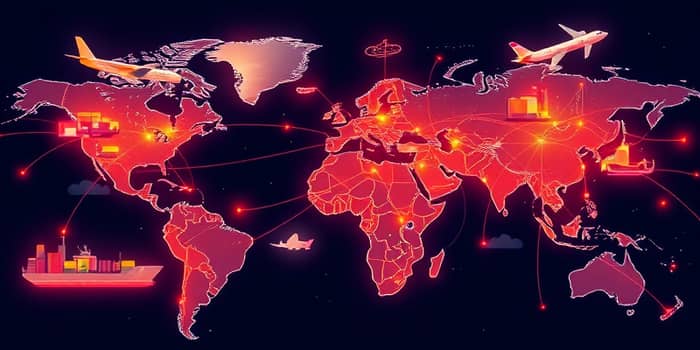
In today’s volatile global economy, companies face unprecedented challenges that interrupt production, transportation, and sourcing. From geopolitical conflicts to cyber threats, the modern supply chain is under constant stress. This article delves into why and how multinational firms are reshaping their networks, offering insights and strategies to navigate uncertainty.
Recent data reveals a startling trend: in 2024, 76% of European shippers reported supply chain disruptions, with 22% experiencing more than 20 incidents. The annual cost of these interruptions is estimated at $184 billion, imposing significant burdens on profitability and market confidence.
These figures underscore the necessity for firms to revise traditional procurement and logistics approaches. As disruptions become routine, linear strategies prove inadequate.
Multinational companies encounter multiple pressure points simultaneously:
This confluence of factors erodes the reliability of long-standing supplier relationships and compel a shift toward more adaptable frameworks.
Leading organizations are adopting bold measures to fortify their operations:
By embracing these tactics, companies can anticipate disruptions and enact contingency plans before crises escalate.
Certain sectors feel the strain more acutely. The automotive and high-tech industries, reliant on specialized semiconductors, have endured production halts due to chip shortages. Meanwhile, food, retail, and energy companies grapple with commodity price swings and rerouted shipping lanes.
In response, some manufacturers have relocated assembly plants from Asia to Latin America and Eastern Europe, balancing cost with agility. This redistribution of capabilities is redefining global trade corridors.
An era of “de-risking” or “friendshoring” is emerging, as firms align with politically stable partners. CEOs now rank supply chain continuity alongside financial integrity and reputational risk.
There is also growing emphasis on sustainability. Investors and consumers demand ethical practices, prompting integration of green sourcing, carbon monitoring, and full audit trails. Balancing environmental objectives with resilience adds complexity but enhances long-term viability.
Executives can take immediate actions to reinforce their networks:
Create localized distribution centers to shorten lead times. Establish multi-tiered supplier audits that verify labor and environmental standards. Engage in continuous dialogue with policymakers to influence trade regulations beneficially.
Empowering supply chain teams with predictive analytics and AI-driven forecasting tools fosters proactive decision-making. Training employees in crisis response and organizing regular simulation drills ensure readiness.
Andrew Moxon of Thomson Reuters emphasizes that complexity and disruption are the new normal. He advocates investing in talent, data, and advanced technology to confront these challenges head on.
CEOs increasingly view supply chain resilience as central to corporate strategy, elevating it to a board-level concern. Active scenario planning and cross-functional collaboration are now critical success factors.
In a world where uncertainty is constant, robust supply chains are no longer optional. Multinational firms that adopt diversified sourcing, leverage digital innovation, and prioritize sustainability will gain a decisive competitive edge. By acting now, companies can transform risk into opportunity and secure their place in the future global economy.
References













